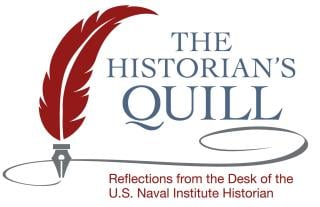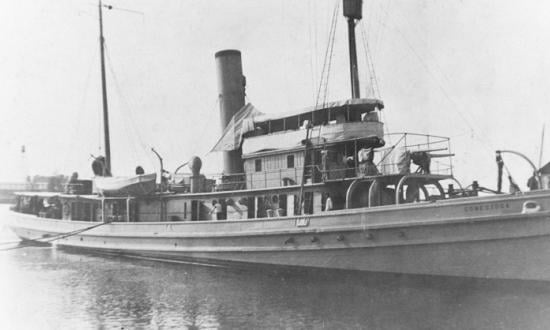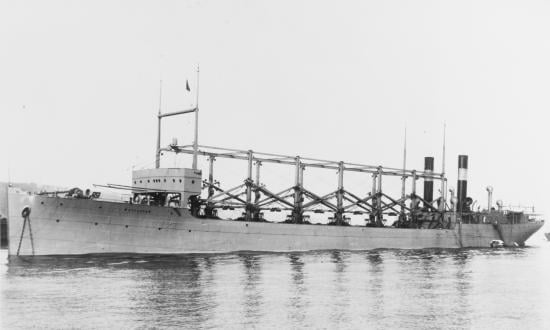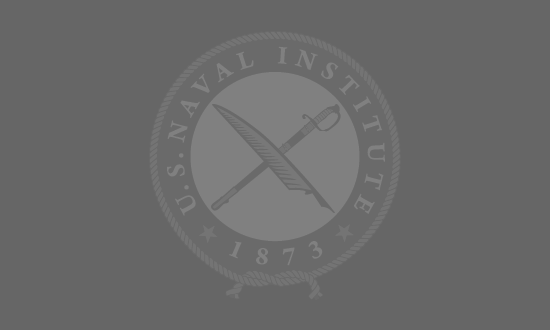Morgan Robertson once wrote a novel titled Futility. It was not particularly good literature, yet it had one unusual characteristic—one that almost defies the imagination.
It told the story of a fictitious ship, an ocean liner made up in Robertson’s vivid imagination, that was the very cutting edge of technology, considered unsinkable and therefore carrying too few lifeboats for her passengers and crew. In the novel, this ship gets underway for her maiden voyage and, on a cold April night, strikes an iceberg and is lost.
Many likely will recognize that this is remarkably similar to the true story of the sinking of the Titanic. She too struck an iceberg on her maiden voyage on a cold April night. She too was considered unsinkable and carried too few lifeboats. Both ships had three screws and two masts. Both were rated to carry 3,000 passengers. Both vessels were struck by icebergs on their starboard sides.
Robertson’s fictitious ship was 800 feet long, had 19 watertight compartments, and was making 25 knots when she struck the iceberg.
The Titanic was 882.5 feet long, had 16 watertight compartments, and was making 22.5 knots when she struck the iceberg.
One might think Robertson was stealing his storyline—except for the amazing fact that he wrote his novel in 1898, and the Titanic did not sail until 1912!
And if all those coincidences were not enough, one final fact is that Robertson had named his imaginary ship . . . the Titan!
* * * *
There is something in human nature that begs for some explanation beyond coincidence. There is something more satisfying in knowing there is a reason—however unscientific—for an occurrence or series of occurrences, rather than accepting such things as random, meaningless coincidence, beyond any laws or control. Such explanations are classed as superstitions and, while this desire for explication is not limited to those who go down to the sea in ships, sailors are often seen as a superstitious lot.
Through the centuries many legends have become part of nautical lore. The Flying Dutchman is said to roam the seven seas with a ghost crew, the appearance of dolphins in a ship’s bow wave when she is departing on a cruise is said to be an omen of good luck, and both mermaids and sirens have conflicting roles in a sailor’s fortune. While these beliefs are no more real than bad luck occurring on Friday the 13th, there are times when unusual occurrences are difficult to dismiss as mere coincidence. And some of these hard-to-accept coincidences are part of the history of the U.S. Navy.
Collisions
During the hotly contested struggle for the Solomon Islands during World War II, when Japanese and American soldiers and Marines were engaged in heavy fighting on Guadalcanal and some of the other islands in that chain, the Imperial Japanese Navy supported their forces ashore by making frequent sorties down a water passage among the many islands that soon became known as “the Slot.” These sorties—dubbed the “Tokyo Express” by the Americans—led to frequent engagements with U.S. ships in the area and resulted in a number of major naval engagements that proved to be key components in the ongoing campaign.
On the night of 1 August 1943, 15 U.S. torpedo boats engaged four Tokyo Express destroyers. Unlike many other nights, neither side suffered any losses in the fighting, but one of the American PT boats was unfortunate enough to be lying in the path of the Amagiri, one of the marauding enemy destroyers. It was a pitch-black night, and neither vessel’s captain was aware of the other’s presence in the darkened Slot until it was too late.
The fast-moving Japanese ship crashed into the diminutive PT boat with great force. The smaller vessel never stood a chance; she was cut in two and her fuel tanks exploded. Two of the crew were killed and several others were badly injured in the collision and the resulting conflagration as the boat’s fuel ignited and burned furiously.
The Japanese destroyer continued down the Slot, and the survivors were left in the dark waters to fend for themselves. And fend they did. With the fitter men helping the more seriously injured, these PT sailors swam to one of the many islands that make up the Solomons archipelago.
They guessed correctly that no one knew they were there. The crews of the other boats out in the Slot that night had seen the explosion and assumed all hands had been lost. The survivors, knew that they—particularly the injured—could survive for only a limited time in the inhospitable jungle on the island. The destroyed PT boat’s captain devised several plans to try to get them rescued, including his swimming out into the Slot on several nights in hopes of getting the attention of U.S. vessels on patrol.
The plan that ultimately worked, causing them to be rescued after a week, was a message carved on a coconut shell and delivered to the U.S. forces by friendly natives on one of the other islands in the area.
The captain, a young lieutenant from a wealthy family in Boston, was awarded the Navy and Marine Corps Medal for heroism, and barely more than 17 years later was elected president of the United States. On his desk in the Oval Office, John F. Kennedy kept a small plaque that quoted a Breton fisherman’s prayer: “O God, thy sea is so great, and my boat is so small.”
Kennedy and ten of his crew escaped death that dark night in the Solomons’ Slot, but he could not escape death’s summons a second time when, in the glaring daylight of a Dallas morning, he was assassinated on 22 November 1963.
(Naval History and Heritage Command)
To honor the felled president and former sailor, an aircraft carrier was named the USS John F. Kennedy and commissioned on 7 September 1968. Seven years later, in an ironic event eerily similar to the collision of the PT boat and the destroyer, the aircraft carrier bearing Kennedy’s name was involved in a terrible collision with the cruiser Belknap. Reminiscent of the ensuing conflagration in the Slot in 1943, aviation fuel poured down from the carrier’s flight-deck refueling stations into the cruiser’s superstructure, causing a horrific fire that burned most of the night and melted the Belknap’s superstructure. Heroic efforts saved the ship, but six Belknap sailors and one from the Kennedy died, and many others were seriously injured.
The coincidence of collision was bizarre in its own right, but even more amazing was that out of 365 possible days in a year that the collision between the USS Belknap and John F. Kennedy could have occurred, this disaster took place on the night of 22 November 1975—on the twelfth anniversary of the assassination of President John F. Kennedy.
Jinx?
In 1797, when the frigate USS United States was commissioned, she was the first American warship to be launched under the naval provisions of the Constitution of the new nation that had won its independence from Great Britain just a few years before. Built in time to participate in the Quasi-War with France, she captured a number of French privateers and recaptured several American ships that had been taken by the French.
In the War of 1812, the United States won new glory not only by defeating the frigate HMS Macedonian, but also actually bringing the captured prize back to New York City, ultimately to serve in the U.S. Navy as the USS Macedonian. The capture of a British warship created a huge sensation, raising American spirits at a time when the war was not going well on other fronts.
Such a celebrated beginning seemed to promise a glorious career for the ship bearing the name of her country. But then her luck changed, and she was destined for an ignominious end.
(Naval History and Heritage Command)
When America declared war on Algiers in February 1815, the United States headed for the Mediterranean to fight the so-called Barbary pirates of North Africa. But the United States never participated in anything more notable than routine patrols, an inglorious comedown for the famous frigate that had once prevailed against the Royal Navy.
In the years that followed, the United States would go in and out of service, never seeing anything like the action of her early days. Herman Melville—later the renowned author of Moby Dick and other classic novels—sailed in her for a time. Whether it was more a reflection of Melville or the ship he served in is a matter of conjecture, but he had little of a positive nature to report when he chronicled his experiences in his novel White-Jacket.
From 1849 until 1861, the United States rotted away in Norfolk, Virginia, and might well have ended her days that way except for the outbreak of the Civil War. On 20 April 1861, the Navy Yard at Norfolk was captured by Confederate troops. Because they were desperate for vessels in any kind of condition, they repaired the captured ship and commissioned her the CSS United States. “Confederate States Ship United States” seemed a bit odd to many, so she was often referred to as the CSS Confederate States instead. When the Confederates were forced to abandon the Navy Yard in May 1862, they decided to sink her in the middle of the Elizabeth River to form an obstruction to oncoming Union vessels. Once Norfolk was again under Federal control, she was raised and towed to the Navy Yard. There she remained until December 1865 when she was broken up and her wood sold for scrap. It was a sad ending for a ship whose beginnings had been so promising and who bore so important a name, but no one seemed to have given much thought to the matter at the time and for a long time after.
Then, on 25 September 1920, the keel was laid for a new Lexington-class battle cruiser in the Philadelphia Navy Yard, and the new ship was given the name United States. It seemed for a while that the old meaningful name was to be resurrected.
But world politics intervened, and on 8 February 1922, with the ship barely 12 percent complete, construction was halted in compliance with the Treaty for the Limitation of Naval Armaments. Construction of the new United States was halted according to the terms of the treaty. The unfinished hulk of the would-be United States was sold for scrap the following year. The treaty, which had been signed by the United States and other world naval powers with the hope of preventing future war, was itself scrapped, ultimately leading to World War II, the greatest sea war in history.
In the spring of 1949, the keel was laid for another United States. This one was to be a “super carrier,” designed to meet the challenges of the developing superpower confrontation with the Soviet Union by its ability to launch long-range aircraft equipped with atomic weapons. This time internal politics intervened. Just five days after her keel-laying, work was terminated at the order of the Secretary of Defense, who had decided that aircraft carriers were no longer needed—that Air Force bombers alone could fight the Soviet Union should war come. This proved folly when North Korea invaded South Korea in 1950 and aircraft carriers proved essential in avoiding a catastrophic defeat and in fighting the subsequent war. But the would-be carrier United States remained a casualty and would not be built. Talk of a jinx began to circulate.
These superstitious rumblings had not yet quieted when once again, in November 1993, yet another United States was laid down. This one was to be an even bigger, more capable ship—a Nimitz-class nuclear-powered aircraft carrier. But 14 months after construction was begun, the decision was made to rename the ship the USS Harry S. Truman, to honor the 33rd President of the United States. There was nothing sinister or deliberate in thwarting plans for another United States, and few questioned the wisdom of naming a ship after the Commander-in-Chief who had first gone to war with Communism, but for those who subscribe to such things, it was not a great leap to imagine that this important name seemed jinxed. Yet another United States had failed to materialize!
There is no denying that to this day—since the original frigate with the glorious beginning and sad end—there never has been another ship named the United States in the U.S. Navy. Blaming a jinx may not be logical, but it certainly seems to fit this situation.
There is nothing new here. Far from it. Among the most prevalent legends of the sea is the idea of a jinxed or cursed ship, a vessel that is destined for bad luck, either by chance or from some supernatural cause. Tales from the biblical story of Jonah to Samuel Taylor Coleridge’s classic poem “The Rime of the Ancient Mariner” reinforce the idea in our culture. And modern sailors point to an imagined Kennedy-family jinx as the cause behind the Kennedy-Belknap collision.
The Triangle
There is an area of the Atlantic Ocean off the Southeastern United States popularly known as the “Bermuda Triangle,” or sometimes the “Devil’s Triangle.” These waters have a long-standing reputation for mysterious happenings, including the disappearance of vessels and aircraft without explanation and often without a trace.
No nautical charts show this area under either popular name, and the U.S. Board of Geographic Names does not officially recognize it, but the apexes of this mythical triangle are generally accepted to be Bermuda, Florida, and Puerto Rico.
While no one has ever been able to prove any direct correlation, there are some characteristics of the Bermuda Triangle that may be worth noting. The unpredictable Caribbean-Atlantic weather pattern in this area might well play a role; sudden local thunderstorms and waterspouts frequently occur in this area. The topography of the ocean floor varies from extensive shoals around the islands to some of the deepest marine trenches in the world. With the interaction of strong currents over the triangle’s many reefs, the topography is in a state of constant flux, and new navigational hazards can develop rather quickly.
Whether there are scientific explanations for these strange events, or they are merely the kind of coincidence that myths are made of, the Bermuda Triangle was the scene of two incidents involving the U.S. Navy that have served to enhance the legendary stature of this area.
One of those incidents occurred during World War I, known at the time as the Great War. Because this was the age when many ships were coal-fired, Navy colliers (coal carriers—forerunners to today’s oilers) played an essential role in the war at sea by ensuring that adequate supplies of coal were available where needed. The USS Cyclops was one such collier and, soon after the United States entered the war in 1917, she was tasked with fueling allied British ships operating in South American waters.
Early in 1918, the Cyclops was in Norfolk, Virginia, when she received orders to carry coal to Brazil and then return to Baltimore with a load of manganese ore. On the return trip she headed through the Triangle en route to a scheduled arrival in Baltimore on 13 March. On board were 306 people, including her crew; an American consul general; and 72 other passengers, mostly sailors on leave, changing duty stations, or headed home to muster out of the Navy.
The Cyclops never arrived. In those days of limited communications and rather primitive tracking systems, it took some time before anyone realized the ship was overdue. On 23 March, the Navy launched a search operation to find the missing ship. All the ships that could be spared fanned out over the Bermuda Triangle looking for the missing collier. The search continued until 1 June, when Assistant Secretary of the Navy Franklin Roosevelt at last declared the Cyclops officially lost and all embarked personnel legally deceased.
Not a single trace of the 542-foot long, 20,000-ton ship and her 306 passengers and crew has ever been found. The Navy followed up with an investigation that spanned a decade and is recorded in some 1,500 pages of interviews and testimony in the National Archives. Because the nation was at war at the time, an obvious possible explanation for the ship’s disappearance was that she had been sunk by a German submarine; but after the war, German records were searched, and nothing was found that indicated that any such attack took place. Many other theories were officially investigated and many more have been offered—including mutiny, improper stowage of the manganese ore, and a giant octopus—but to this day, the mystery of the disappearance of USS Cyclops has never been solved.
The Navy again found itself faced with a mysterious disappearance in the infamous Bermuda Triangle shortly after the end of World War II. At about 1400 on the afternoon of 5 December 1945, Flight 19—consisting of five Avenger torpedo bombers—departed from the U.S. Naval Air Station at Fort Lauderdale, Florida, on an advanced overwater navigational training flight.
In charge of the flight and piloting one of the five aircraft was a senior qualified flight instructor with extensive experience. The other planes were piloted by qualified pilots with between 350 and 400 hours of flight time, of which at least 55 hours were in this type of aircraft. The weather conditions over the area covered by the track of the navigational problem were considered average for training flights of this nature, though there were a few thunderstorms reported in the area.
At about 1600, a radio message between the flight leader and another pilot was intercepted by a shore-based radio station. The message indicated that the aircraft were apparently experiencing some kind of compass malfunction and the instructor was uncertain of his position and could not determine the direction of the Florida coast. Attempts to establish further communications on the training frequency were unsatisfactory because of interference from Cuban radio stations and a great deal of static caused by atmospheric conditions. All radio contact was lost before the exact nature of the trouble, or the location of the flight, could be determined.
All available facilities in the immediate area were called upon to locate the missing aircraft and help them return to base. These efforts were unsuccessful. No trace of the missing airplanes or their crews was found even though an extensive search operation was launched and continued for five days. On the evening of 10 December weather conditions deteriorated to the point that further efforts became unduly hazardous, and the search was terminated.
To further compound the mysteriousness of this unexplained disappearance of all five aircraft (and add to the legend of the “Devil’s Triangle”), a Navy patrol plane, which was dispatched at approximately 1930 on 5 December to search for the missing torpedo bombers, also disappeared without a trace.
In a further twist of fate, in 1991 a salvage ship discovered five Avengers in 600 feet of water off the coast of Florida. It appeared that Flight 19 had been located at last. But subsequent examination of those planes showed that they were not the same aircraft that had taken off as Flight 19, so the final resting place of the Flight 19 planes and their crews remains one of the many secrets of the Bermuda Triangle.
In 1977, the classic movie Close Encounters of the Third Kind offered an explanation for the disappearance of Flight 19 that is not likely to find its way into official Navy records, since it involved space aliens. It is likely, however, that reasoned theories and fanciful explanations of the strange happenings in the Bermuda Triangle will continue for as long as there are unanswered questions and odd coincidences. Such strange but true occurrences have always added to the mystery of the sea.
In my own experience, I was the officer of the deck of an aircraft carrier during a night transit of the Bermuda Triangle. The night was clear and the sea placid, though we could see several thunderstorms visually and on radar in the area. At about midnight, the lookouts on the signal bridge reported a cluster of dim lights dead ahead. My junior officer of the deck and I also could see them, but only through our binoculars. The radar display was empty. The possibility of wooden-hulled fishing boats came to mind, but the cluster of lights did not change in direction or in luminosity as we continued on track. From his post at the chart table behind me, the quartermaster of the watch said, “This is the Bermuda Triangle, Sir!” which brought a nervous laugh from other members of the watch team.
After several minutes passed with no change, I decided to alter course to avoid these lights, whatever they were. As I reached for the sound-powered phone to inform the captain who was asleep in his sea cabin, someone emerged from the ship’s interior onto one of the catwalks edging the starboard side of the flight deck forward of the “island” superstructure. Apparently, the “light locker” that was supposed to prevent such things malfunctioned, allowing a momentary burst of white light to emerge from the opening, illuminating one of the ship’s 35-foot whip antennas. During flight operations, these long antennas were lowered into a horizontal position—looking like cat’s whiskers along the edge of the flight deck—to prevent them from interfering with the aircraft being launched from the forward catapults. Because they were more efficient in an upright position, they were routinely raised to a vertical position when the ship was not conducting flight operations.
Seeing the antenna almost directly ahead of the bridge windows, I also could see that the tip of it was glowing with an eerie green light. Apparently, the electrical activity produced by the storms in the area was causing all of the whip antennas along the edge of the flight deck to glow with “St. Elmo’s Fire,” a natural phenomenon sometimes appearing in the rigging of ships that also has provoked many superstitious tales among sailors over the centuries. I now realized that those glowing antenna tips were the source of the lights we thought we were seeing dead ahead.
I put the phone back in its cradle, grateful that I had not yet woken the captain. I had very nearly maneuvered my ship to avoid our own whip antennas—something that would have had no serious consequences but would surely have caused me a significant degree of embarrassment and would have given my shipmates much to discuss in the wardroom and on the mess decks!
Although there was clearly a science-based explanation for what happened that night, there was no question that I—and I’m pretty certain I was not alone among the members of the watch team—had not been immune to a measure of unease as we watched those eerie lights looming ahead of us in the Bermuda Triangle.
The Mythical Shipmate
Superstition will likely remain tucked away in the sailor’s sea bag to emerge when strange happenings seem to defy logic. Its power can be surprising. Despite the U.S. Navy’s essential role in World War II, ships were sometimes delayed in getting underway for important missions by many hours—even an entire day—to avoid getting underway on a Friday because a long-standing superstition warned that doing so invited catastrophe. The origin of that aversion has several explanations, but the one most commonly cited is that Christ was crucified on a (“good”) Friday.
Some superstitions have their roots in truth. The old saying “Red sky at morning, sailor take warning; red sky at night, sailor’s delight” has some meteorological basis. And, while there is no science in the belief that whistling on board ship can create headwinds or even storms, the taboo against whistling may have stemmed from the practical concern that mutineers might be using whistles to communicate among themselves.
As long as strange but true things continue to occur, there will be legends and myths, whispers of jinxes, and tales of the supernatural. And, in truth, this is not altogether surprising in light of one final factor. Anyone who has been to sea and peered into its mysterious depths cannot help but wonder what lies below. Any sailor who has watched the changing moods of the sea, or seen the dancing stars of luminescence in a ship’s wake, or heard the ominous wail of the wind in a squall, will be tempted to think of powers beyond those of simple physics. The sailor’s realm is a hauntingly beautiful and sometimes ominous place to live and work and dream and wonder.











